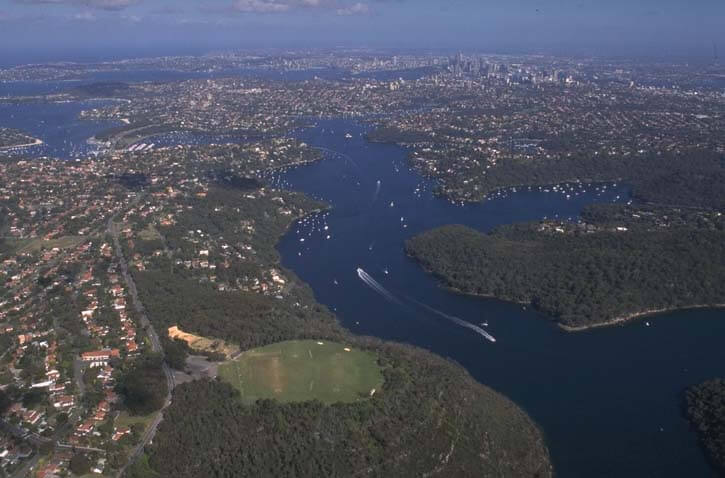Middle Harbour Creek is situated in the Sydney Metropolitan region of New South Wales. It is classed as a drowned valley estuary and flows into Port Jackson/Sydney Harbour.
The creek flows through a wooded valley flanked by Sydney’s North Shore suburbs. The estuary and its surrounds are a popular recreational place for activities such as birdwatching, walking, picnicking, boating, fishing, and kayaking.
Water quality report card
As part of our water quality monitoring program we assess the water quality and ecosystem health of an estuary using a range of relevant indicators. We sample a subset of the estuaries located between Taree and Wollongong every 3 years. The most recent sampling in the Middle Harbour Creek was completed over the 2019–20 summer, when 2 sites were sampled on a monthly basis.
This report card represents 2 water quality indicators that we routinely measure: the amount of algae present and water clarity. Low levels of these 2 indicators equate with good water quality.
Algae
Water clarity
Overall grade
The report card shows the condition of the estuary was good with:
- algae abundance graded fair (C)
- water clarity graded good (B)
- overall estuary health graded good (B).
Grades for algae, water clarity and overall are represented as:
- A – excellent
- B – good
- C – fair
- D – poor
- E – very poor.
Go to estuary report cards to find out what each grade means, read our sampling, data analysis and reporting protocols, and find out how we calculate these grades.
We have monitored water quality in Middle Harbour Creek since 2010. This table shows the water quality grades for this estuary over that time.
| Year | Algae | Water clarity | Overall grade |
|---|---|---|---|
| 2010–11 | B | B | B |
| 2013–14 | B | A | B |
| 2016–17 | B | B | B |
Physical characteristics
| Estuary type | Drowned Valley |
|---|---|
| Latitude (ºS) | –33.82 |
| Longitude (ºE) | 151.26 |
| Catchment area (km2) | 77 |
| Estuary area (km2) | 6.1 |
| Estuary volume (ML) | 81,900 |
| Average depth (m) | 13.4 |
Notes: km2 = square kilometres; m = metres; ML = megalitres.
Water depth and survey data
Bathymetric and coastal topography data for this estuary are available in our data portal.
Land use
Most of the land within Middle Harbour Creek catchment is occupied by urban development associated with the northern suburbs of Sydney. Around one-third of the catchment remains forested, a lot of which is protected as part of Garigal National Park. Much of the riparian zone remains intact in the middle and upper reaches of the estuary.
National and marine parks
- Garigal National Park is the largest conservation area in this catchment.
- This estuary does not flow into a marine park.
Community involvement
- Greater Sydney Landcare Network is a community organisation that supports individuals and groups that work to protect, restore and improve the natural environment of Greater Sydney, which includes metropolitan Sydney, greater western Sydney, the Central Coast and Blue Mountains.

Aerial view of Middle Harbour Creek estuary.
Local government management
Local councils manage estuaries within their area unless the estuary is attached to a marine park. Northern Beaches Council and Ku-ring-gai Council co-manage this estuary.
Threatened species
Middle Harbour Creek estuary and surrounding bushland provide important habitat for the endangered southern brown bandicoot.
Read more about the biodiversity in our estuaries.